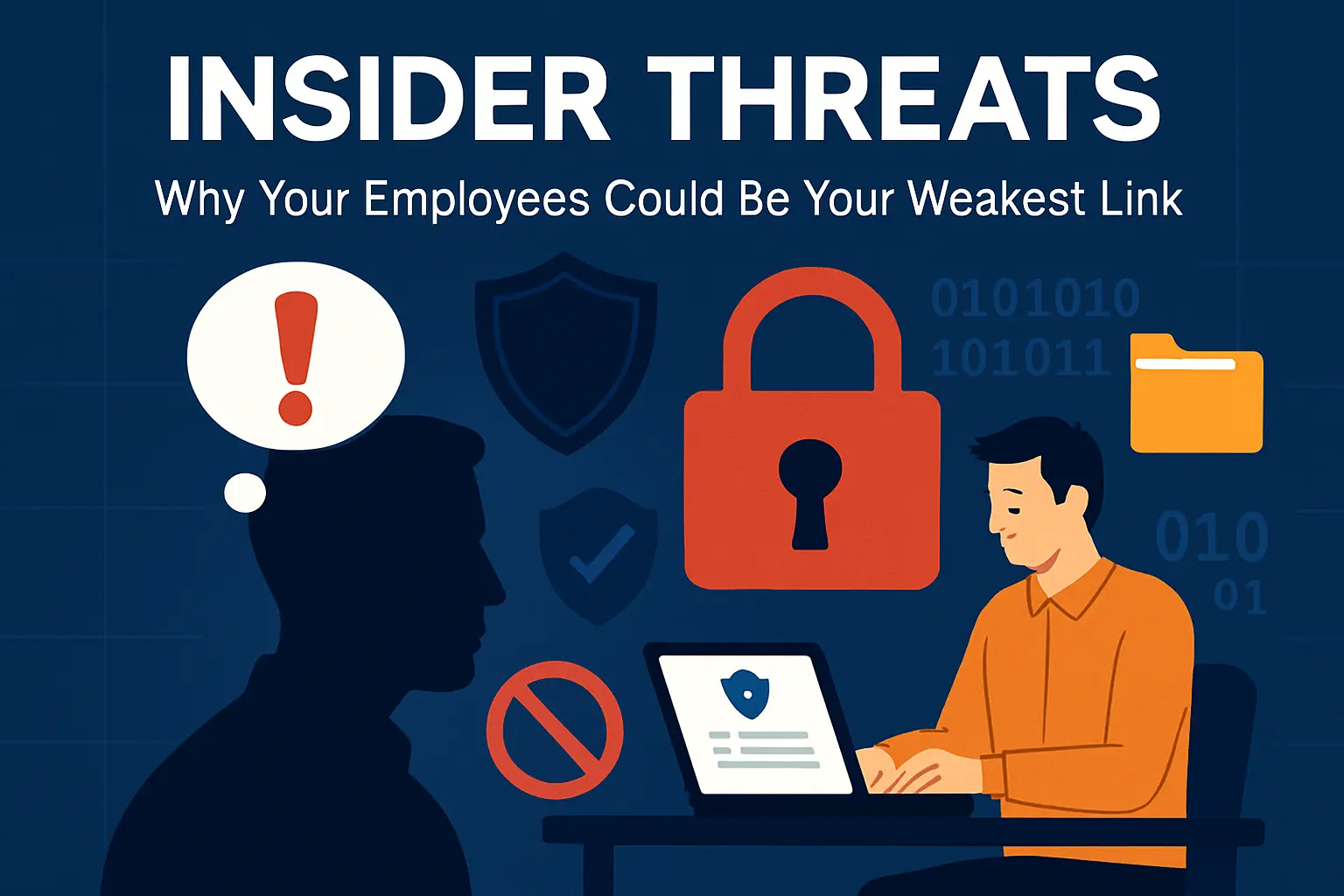Insider Threats: Why Your Employees Could Be Your Weakest Link

Protecting against foreign hackers, nation-state attacks, or ransomware gangs should be the first concern for modern cybersecurity companies. Businesses can overlook, meantime, an increasing class of risk inherent in their own operations. Usually beginning inside the organization itself, staff personnel, contractors, or vendors with formal access to internal systems assist in enabling these attacks.
Insider threats—intentional with evil intent or unintentional resulting from carelessness—are among the most dangerous and challenging to find among them. The positive news is that outstanding cyber awareness all around a company will help to significantly reduce this risk.
Knowing Insider Threats: Malevolent Intent vs. Negligence
Not always are acts of sabotage by insiders harming others. Usually they follow from poor training, careless behavior, or neglect of cybersecurity policies.
Insider danger sloppish:
Personnel could accidentally lead to security breaches by:
- Clicking on phishing websites
- Using bad passwords
- Installing illegal software
- Using personal devices on corporate networks
- Losing unencrypted USBs or laptops
These apparently benign acts could let hackers access your system and lead to:
- Ransomware assaults
- Data leaks
- Legal violations
Major insider concerns:
More perilous are:
- Disgruntled employees
- Previous personnel with residual access
- Internal actors deliberately selling private information
- System damage or data theft
Sometimes hostile insiders go beyond policies to:
- Conceal their activity
- Exfiltrate critical data to competitors
- Install malware before leaving the company
- Use privileged access
A Ponemon Institute study highlights the financial impact of insider threats to companies, revealing their average yearly cost of $15 million.
Business Edition Real World Insider Threats
- A former employee of a U.S. electric vehicle company sought to hack internal systems using a script after firing, risking major delay.
- An HR executive inadvertently emailed an unencrypted copy of employee payroll data to an outside vendor who subsequently suffered a breach.
- A healthcare worker in India downloaded thousands of patient records over several weeks and resulted in a major data privacy investigation.
From manufacturing to finance, healthcare to retail, these events are actual and affect every industry—not speculative.
Why Businesses Should Give Cyber Awareness Top Priority to Lower Insider Risk
Although firewalls and antivirus systems are quite important, technical protections alone cannot prevent human mistake or malice. This is the point at which cyber consciousness becomes really handy.
Cybersecurity Awareness Program
Regular, fascinating training classes help staff members to understand:
- What safe password practices look like
- Why they should never expose credentials
- How to spot suspicious behavior among colleagues
Training never ends; it is ongoing. Furthermore, diverse cyber hazards need distinct staff knowledge as well.
RBAC—Role-Based Access Control
- Limit user access such that it matches job titles.
- Not everyone needs access to financial data, source code, or consumer databases.
- Less access = Lower potential harm.
Initiatives on Internal Hazards
Arrange a staff initiative to:
- Find, record, and address insider issues
- Conduct routine staff activity audits
- Monitor behavior for anomalies
- Apply departure rules quickly reverting access upon resignation or termination
Encourage a Culture First in Security
- Promote cybersecurity from the top level down
- Help everyone see security as part of their job, not only IT’s
- Make staff members comfortable reporting questionable activity or breaches
- Encourage the mindset of: “Think before you click”
Real Defense = Knowledge + Technology
Appropriate tools and knowledge help to lower risk:
- Data Loss Prevention (DLP): Tracks unauthorized data transfer
- Endpoint Detection and Response (EDR): Notes device aberrant behavior
- User Behavior Analytics (UBA): Observes access trends that may indicate threats
- Multi-Factor Authentication (MFA): Adds another layer of protection against account abuse
Still, people are the first line of defense—and often the weakest without the necessary knowledge, regardless of how developed your systems are.
Final Thought: Make the Weakest Link the Strongest Advantage
Insider dangers are not anomalies. Every business today that:
- Runs internal systems
- Maintains sensitive data
- Functions online
…is daily vulnerable to these threats.
While careless or malicious employees can cause significant damage, proactive cyber awareness campaigns can:
- Reduce human error
- Stop data leaks
- Spot hazards early
The goal isn’t to breed mistrust but to create a well-informed, vigilant workforce that can identify risk—and act before damage is done.
In cybersecurity, knowledge is not just defense—it’s empowerment.
